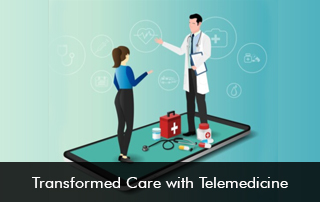As the COVID-19 pandemic hit the world, patient care was impacted drastically and required quick action. Healthcare professionals and providers realized that they can’t wait for the pandemic to get over and hence took a proactive approach so care can be processed effectively. In the crisis Telemedicine EMR Software took the spotlight and became a concrete option for patients to receive a prompt diagnosis, and treatment remotely. Telehealth not only transformed care during the pandemic but even after the pandemic subsided.
A connected and preventive care approach
The COVID-19 pandemic provided an opportunity to update prevention in today’s medical field. The US healthcare system has always given preference to patients that are extremely sick and have relied on high-end care to improve their diminishing condition. While preventive care has been used for weakening diseases.
By learning lessons from the pandemic and taking a proactive approach to prevention, the healthcare sector has a window of opportunity to leverage technology to set up databases and other resources to avoid illnesses. These illnesses can include likes like COVID-19 to heart diseases before they go out of hand and consume the lives of people at large.
The pandemic highlighted the disparities in the healthcare system and how inefficient the public health system is during a disaster. The large private hospital systems had prevention in their healthcare systems but were unconnected to other public systems.
Unlocking telemedicine’s potential for improved health quality
Every wave of the pandemic posed a new threat. Hospitals and health systems deployed the telemedicine platform to combat stress and shortage of time. Telemedicine sessions proved effective for patients to receive care from the safety of their homes.
There are great healthcare disparities when it comes to healthcare in rural and minority areas. The geographical residence is a major roadblock in accessing high-quality treatment and care. A survey conducted by the University of Minnesota Rural Health Research Center noted transportation as the biggest barrier for patients to have access to care. Fortunately, the robust telemedicine platform helped patients residing in rural areas to receive the same quality of care as in the cities. Telemedicine has greatly improved patient accessibility and in turn, enhanced health outcome levels.
To tap the potential of telemedicine solutions interoperability must be at its core. A powerful data exchange strategy should be the building block of a health systems telemedicine approach. This will facilitate the unlocking of data and make it a success for providers, and patients.







